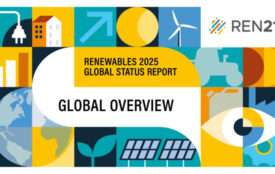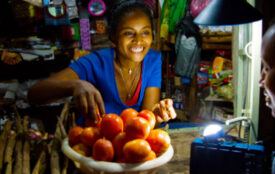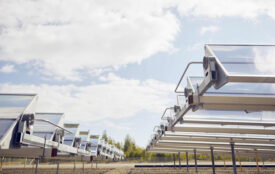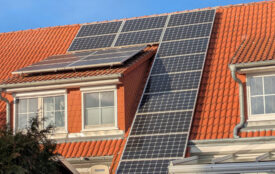Energy poverty and access to electricity in the Pacific
Energy poverty is widespread in the Pacific. It is estimated that 70 per cent of households in the region don’t have access to electricity and 85 per cent don’t have access to clean cooking energy technology.
These access rates are low by both international and regional standards, being equivalent to those in sub-Saharan Africa and slightly below the average for low income countries. This is despite higher income levels in much of the Pacific. By Matthew Dornan
Energy poverty, or the lack of access to modern energy services, is a concern given its development impacts. Limited access to electricity is a barrier to economic activity and the delivery of key public services, including health, education and infrastructure services. At the household level, un-electrified households have been shown to spend more on energy than do households with access to electricity. This is because un-electrified households are forced to spend money on fuels for lighting, such as kerosene, which are more expensive than the use of electricity for lighting.
The situation does not appear to be improving. There has been limited progress in widening access to electricity in rural areas of the Pacific – which is where the vast majority of un-electrified households are situated. This is particularly true in Papua New Guinea (PNG), Solomon Islands and Vanuatu, where electrification rates are lowest, being below what would be expected given per capita income levels.
There are a number of reasons why access to electricity in rural areas is so low in the region.
One relates to spending on rural electrification. The high upfront cost associated with rural electrification means that subsidisation is generally required (this is subsidisation for the upfront cost of establishing an electricity supply, not ongoing supply costs which can be met through user fees). But government resources that are dedicated to rural electrification in the Pacific are limited.
In Solomon Islands for example where it is estimated that just 12 per cent of the population has access to electricity, the rural electrification in 2012 totalled just US$1.34 million (and this represented an increase on previous years). In Fiji, rural electrification spending is less than US$10 million, while tax concessions and contingent liabilities associated with investments in the existing electricity network (or “grid”), measure in the hundreds of millions of dollars. These tax concessions and contingent liabilities benefit households that already have an electricity supply, not households without access to electricity.
The very ambitious renewable energy targets of Pacific island countries, I argue, are a concern in this respect. Governments, in order to meet these targets, will require substantial investment in renewable technologies. But the bulk of this investment will be in areas where there is already access to electricity – rural electrification has only a very minor impact on enabling countries to meet renewable energy targets, given low levels of power consumption in rural areas. There is, therefore, the potential for renewable energy targets to divert attention and funding away from rural electrification.
There are already indications that this is occurring. A list of energy sector projects was presented by Pacific island governments at the Pacific Energy Summit in March 2013. Although not comprehensive, it provides insights into the priorities of governments. Projects that expand access to modern energy services (including electricity) accounted for just 4 per cent of the total value of projects on the list.
The reasons for limited progress in widening access to electricity are broader, of course. One important factor is the way in which existing subsidies – both explicit and hidden – are spent. The bulk of subsidies are currently directed toward maintaining low residential electricity prices – primarily for urban electricity grids. These subsidies can take the form of funding support for power utilities, tax breaks and loan guarantees. What this means is that subsidies are directed toward maintaining low prices for households that already have access to electricity, not for widening access to electricity.
A related issue is the common practice of cross-subsidisation through a uniform electricity price (or tariff). Cross-subsidisation has the effect of limiting the extension of electricity grids into rural areas, as the cost for the power utility of supplying a rural household may exceed the uniform electricity tariff. This means that the electricity utility has no commercial incentive to extend the electricity grid – even where upfront costs are subsidised by government.
Incentive problems are not only the result of cross-subsidisation. An article in the March 2013 ADB Pacific Economic Monitor suggests that there are six Pacific power utilities that make a loss on every unit of power that they sell. Regulatory reform by Pacific Island governments is required to address such issues.
But what about rural electrification in areas where the electricity grid will never extend? The geography and population distribution of countries like PNG, Solomon Islands, Vanuatu, FSM and Kiribati makes crucial the installation of isolated, off-grid systems like village-based diesel generators or solar home systems. Yet again, subsidies directed toward electricity consumption in urban areas far outstrip government funding for installation of such systems.
These priorities should be reversed. Increased funding needs to be directed towards rural electrification using off-grid systems, and at the same time, universal subsidies for power consumption among (primarily) urban households should be abolished and replaced by lifeline tariffs that protect low income households. Institutional arrangements that facilitate the maintenance of off-grid systems are also important.
Establishing such arrangements has historically been a challenge in the region. Innovative programmes in other parts of the world, like the establishment of concessions where a private company or large-scale community cooperative manages off-grid systems, have achieved considerable success. It is time the use of such approaches was explored in the Pacific.
Source
SUN-CONNECT News 2014 | Matthew Dornan is a Research Fellow in the Development Policy Centre at the Australian National University. Source: ISLANDS BUSINESS








